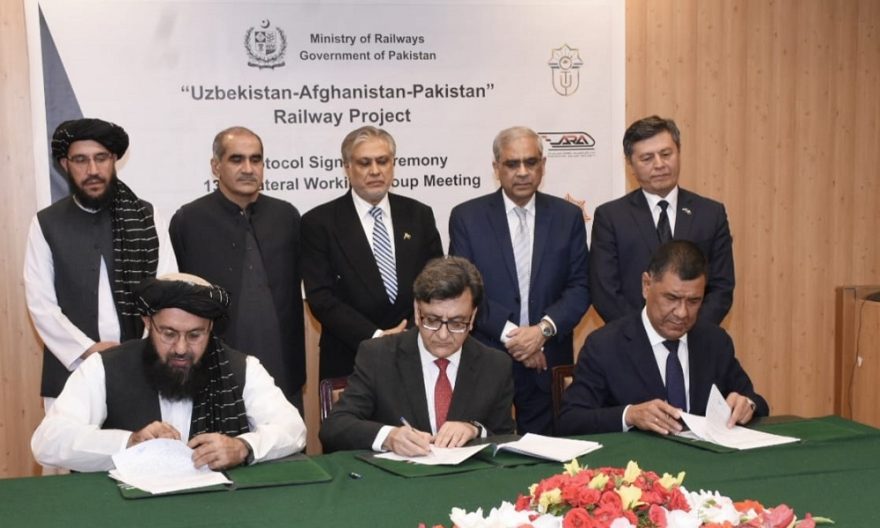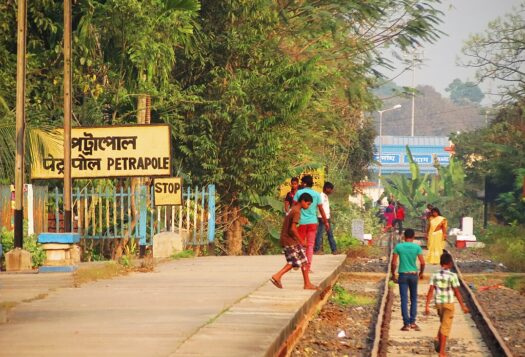
In 2023, Uzbekistan, Pakistan, and Afghanistan developed an idea to connect South and Central Asia through a railroad to enhance trade and economic opportunity in the region. That idea has now taken the shape of the Trans-Afghan Multimodal Transport Corridor. In 2024, the Corridor has seen significant progress, completing its first pilot project and marking other major infrastructural developments. Running from northeastern Kazakhstan to Pakistan, via Uzbekistan and Afghanistan, this initiative is part of a broader strategy to establish a renewed southern corridor using both land and sea, eventually linking South and Central Asia with the port of Jebel Ali in the United Arab Emirates. Yet, despite recent breakthroughs, and the multifarious economic benefits that it brings, the Corridor still faces various political and logistical challenges. These can only be overcome if the region’s many governments put aside their differences and come together for the broader cause of the project.
Regional Integration: A Local Effort
The Trans-Afghan Multimodal Transport Corridor is a network of rail, road, and sea lanes that aim to connect Central Asia with South Asia and beyond. In recent months, the project has seen the involvement of several countries, including Pakistan, Uzbekistan, Afghanistan, Qatar, and the UAE, becoming an example of regional cooperation in trade and infrastructure development. In particular, the Corridor highlights growing regional cooperation in maintaining stability in Afghanistan without the interference of global powers.
Despite recent breakthroughs, and the multifarious economic benefits that it brings, the Trans-Afghan Multimodal Transport Corridor still faces various political and logistical challenges.
The immediate context for this effort is the vacuum left by the U.S. withdrawal from Afghanistan. Regional integration was a core facet of Washington’s post-9/11 strategy in the region and the U.S. government consequently funded several connectivity initiatives. For Washington, the goal behind increased integration was to reduce Central Asia’s dependence on Russia. Projects like the Turkmenistan-Afghanistan-Pakistan-India Pipeline (TAPI), the Central Asia-South Asia Power Project (CASA-1000), and the Trans-Afghan Railway line were part of this broader strategy.
After the Taliban’s return to power, U.S.-backed projects were either halted or delayed, creating a vacuum in regional connectivity efforts. With the absence of the United States, regional players like China, Russia, Pakistan, and Iran emerged to prevent instability in Afghanistan and are now actively involved in shaping regional policies. For instance, China started investing in Afghanistan’s mining sector, and Russia and Iran have criticized Washington’s presence while consolidating their influence in the region.
In recent months, the Trans-Afghan Corridor has emerged as an important effort to shape the region post U.S. withdrawal. The Corridor features a railway track that will run for almost 600 kilometers through Termez in Uzbekistan and Mazar-e-Sharif and Logar in Afghanistan, eventually reaching Peshawar in Pakistan. In all, it is estimated to cost nearly USD $5 billion.
Earlier this year, the Taliban, Uzbekistan, and the UAE signed a memorandum to begin studies on the project’s viability, after a meeting in Tashkent on February 19, where the parties discussed the technical, financial, and strategic aspects of the project. These developments had followed an earlier meeting between transport ministers from Uzbekistan, Afghanistan, Pakistan, and Qatar, which led to the approval of the main routes and implementation modalities for the Corridor.
Despite this recent progress, however, the project is still running behind schedule. Initially, the railway’s construction was expected to be completed by the end of 2027, and it was to have the capacity to transport up to 15 million tons of cargo annually by 2030. However, since construction has not yet started, it is unlikely that this deadline will be met.

Challenges Confronting the Corridor
The Corridor currently faces several challenges, including variations in the size of railway gauges, political instability in Pakistan, and diplomatic tensions.
The different member states involved in the development of the Corridor use railway gauges of different sizes. Pakistan uses a 1,676-millimeter gauge, Uzbekistan uses a 1,520-millimeter gauge, and Afghanistan adopted the international standard gauge of 1,435 millimeters in 2010. These differences necessitate the offloading of trains at border points. To address this issue, the Corridor could utilize China-made multi-gauge carriages.
In addition to these technical difficulties, Pakistan faces several challenges in fully committing to the Corridor’s completion. Political instability, insurgency in Balochistan, and security threats to ongoing projects under the China-Pakistan Economic Corridor (CPEC) are significant hurdles. Recent protests in various regions, including the Chaman border, Gwadar port, and Sost border highlight the socio-political tensions that could impede the smooth operation of trade routes running through the country. These factors could together diminish investor confidence. Additionally, strained relations with Afghanistan due to the activities of the Tehreek-e-Taliban Pakistan (TTP), the repatriation of Afghan refugees, and hurdles to transit trade further complicate Pakistan’s position and make it harder to secure trade routes vital to the Corridor.
The Trans-Afghan Multimodal Transport Corridor has the potential to reshape trade and connectivity in South and Central Asia through its promise of efficient transit routes and the merging of Central and South Asian markets. […] However, the success of this behemoth project is contingent on an amalgamation of cross-sectoral challenges.
If regional powers can overcome these challenges, the Corridor can offer substantial economic advantages. This has been demonstrated by early pilot projects along the Corridor. Recently, Pakistan’s National Logistics Corporation (NLC), in collaboration with Kazakhstan’s KTZ Express, completed a pilot multimodal transportation operation to the port of Jebel Ali in the UAE via Afghanistan and Pakistan. The cargo departed from the Pavlodar Special Economic Zone and was transferred to the Zhetygen transport and logistics center. There, the cargo was efficiently loaded onto two 40-foot sea containers, which were then transported by truck to the port of Karachi in Pakistan. The journey to Karachi, covering 4,900 kilometers, took just 20 days. Similarly, the NLC delivered a consignment of Pakistani mangoes to Tashkent, covering a distance of 2,800 kilometers in a record six days. However, as political tensions between Pakistan and Afghanistan increased, Afghan traders opted to ship 12 trucks of raw materials to China through Iran’s Chabahar port in order to bypass Pakistan.
Countries Must Collaborate to Ensure Success
The Trans-Afghan Multimodal Transport Corridor has the potential to reshape trade and connectivity in South and Central Asia through its promise of efficient transit routes and the merging of Central and South Asian markets. Once completed, this project will provide Central Asian states with an alternative access route, bypassing Russian territory. According to Uzbekistan’s Minister of Transport, the Corridor will reduce shipping time from about 35 days to just 5 days while cutting costs by at least 40 percent. For Pakistan, the Corridor offers a strategic opportunity to solidify its position as a critical transit hub, providing shorter and more cost-effective routes to Central Asian markets and beyond. By doing so, the Corridor could enhance Pakistan’s economic influence in the region, despite its domestic challenges. For Afghanistan, especially under the Taliban, the Corridor serves as a vital channel for economic engagement with neighboring countries, potentially alleviating some of the economic pressures resulting from the regime’s international isolation.
However, the success of this behemoth project is contingent on an amalgamation of cross-sectoral challenges. Continued security concerns emanating from Afghanistan and Pakistan’s borderlands threaten diplomatic stability and financial reliability. While these challenges will persist, if all partners can function multilaterally on the project, the promise of the Corridor’s benefits will likely supersede any lingering tension. Amid a complex regional environment and tense security atmosphere, all parties involved should commit to the Corridor’s long-term viability and implement robust security measures to protect the Corridor’s international trade network. Improving regional connectivity is a priority for South Asia and Central Asia and the Corridor will bring this dream to life.
Also Read: India Should Take a Proactive Interest in the TAPI Pipeline
***
Image 1: Via The Khaama Press News Agency
Image 2: Via Pixabay


